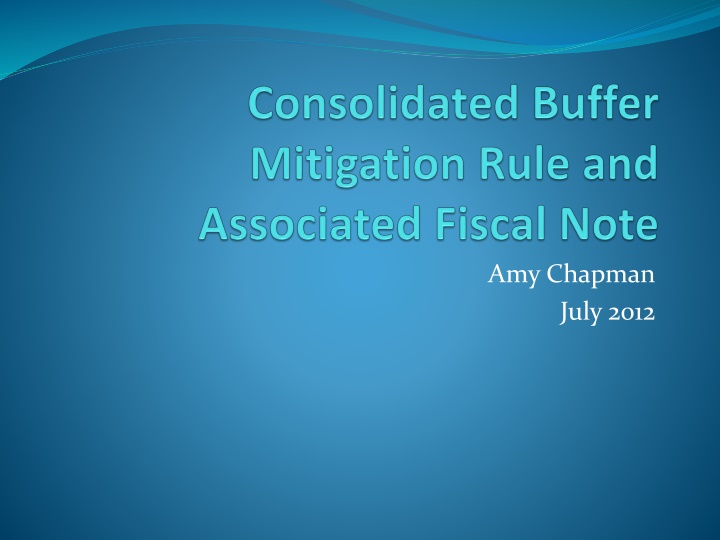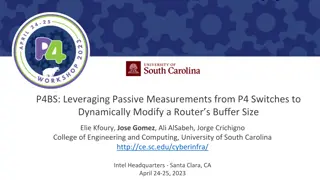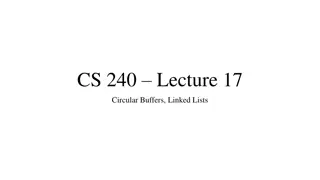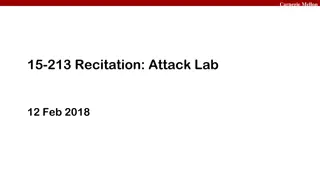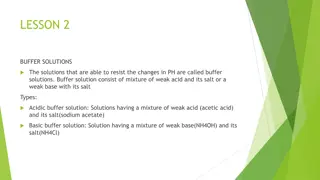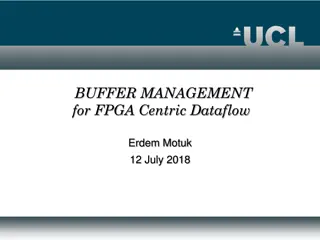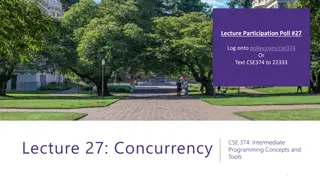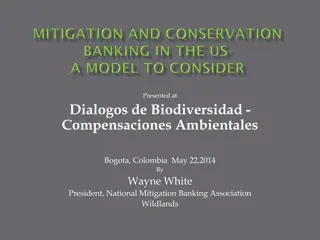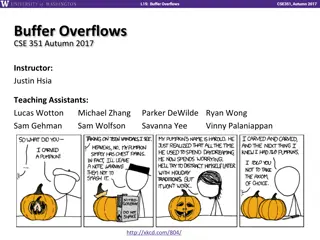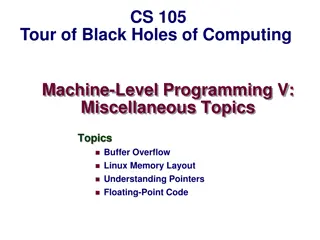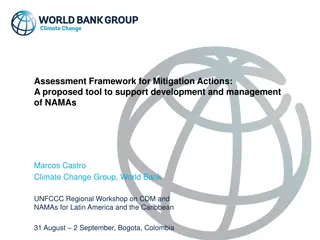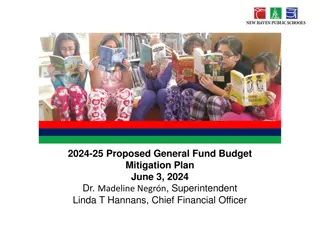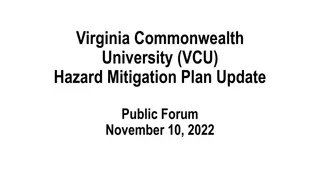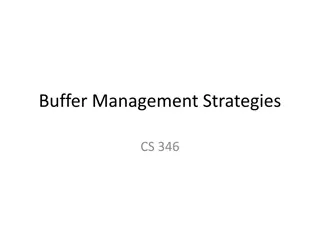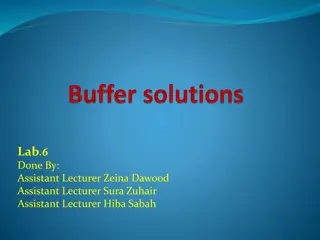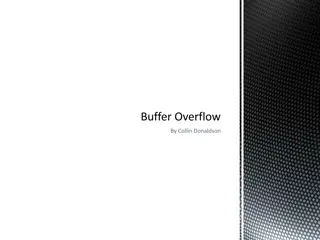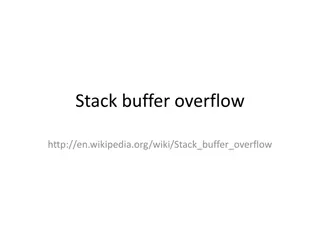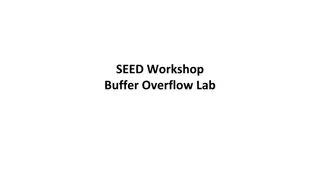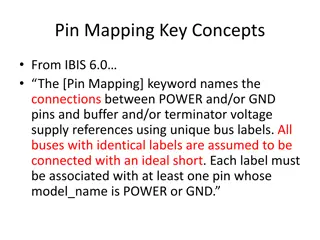Proposed Buffer Mitigation Rules Overview
The proposed buffer mitigation rules aim to address nutrient loading by adopting alternative measures to replace lost riparian buffers. The rules include options for location of mitigation, accounting for buffer and nutrient offset, and various optional methods like coastal headwater stream mitigation and restoration of buffers along unmapped streams. Different entities hold responsibility for the required buffer mitigation, with the Department of Transportation and private development contributing the most.
Download Presentation

Please find below an Image/Link to download the presentation.
The content on the website is provided AS IS for your information and personal use only. It may not be sold, licensed, or shared on other websites without obtaining consent from the author.If you encounter any issues during the download, it is possible that the publisher has removed the file from their server.
You are allowed to download the files provided on this website for personal or commercial use, subject to the condition that they are used lawfully. All files are the property of their respective owners.
The content on the website is provided AS IS for your information and personal use only. It may not be sold, licensed, or shared on other websites without obtaining consent from the author.
E N D
Presentation Transcript
Amy Chapman July 2012
Background on proposed rules Rules required by state statute G.S. 143-214.20 EMC to adopt rules concerning Construction of an alternative measure (of buffer mitigation) that reduces nutrient loading as well as or better than the riparian buffer that is lost. Proposed rules intend to implement this statute as well as revise and update the existing mitigation rules.
Current buffer mitigation Purchase credits from a mitigation bank Restoration of a non-forested riparian buffer Plant trees in non-wooded areas along streams shown on USGS topographic map or County soil survey map
Overview of proposed buffer mitigation rules Location of mitigation Option 1 in 8 digit HUC Option 2 encourage mitigation closer to impact and within 12 digit HUC Option 3 encourage mitigation closer to impact and reduced multipliers for alternative options
Overview of proposed buffer mitigation rules (cont.) Accounting for buffer, nutrient offset and stream credit Option 1: Buffer or nutrient offset credit can be generated from stream restoration projects if buffer at least 50 feet in width Option 2: same as option 1, except wetland mitigation cannot be provided in same 50-feet Option 3: Buffer or nutrient mitigation cannot be generated on stream restoration sites
Overview of proposed buffer mitigation rules (cont.) Optional (alternative) methods of buffer mitigation Coastal headwater stream mitigation Restoration of buffers along unmapped streams Preservation of buffers along mapped streams Preservation of buffers along unmapped streams Narrower buffers on urban streams Enhancement of grazed areas Structural stormwater Best Management Practices Other options as approved by EMC
Who is responsible for the required buffer mitigation? DOT 55% Private development 35% Local government 5% Federal government 4% Single family residential lots 1% State 0.01%
Cost estimates Consulted with private and public mitigation providers and DWQ records to estimate costs Cost based on amount of buffer mitigation required from January 2005 thru Demember 2010.
Additional cost of provisions that apply to all buffer mitigation options Conservation easements no additional cost since required now. Completion bonds no additional cost since required now on stream and wetland projects. Non-wasting endowments - $110,000 per year additional cost estimate.
Additional cost of approaches which would apply to all mitigation proposals (cont.) Accounting for buffer, nutrient offset, and stream credit Option 1 to allow buffer and stream mitigation with separate accounting on same site - Zero additional cost Option 2 to match what is impacted to what is mitigated: $ 994,000 to $ 3,000,000 per year additional cost estimate Option 3 to not allow buffer and stream mitigation on same site: $ 1,600,000 to $ 3,600,000 per year additional cost estimate
Optional methods of buffer mitigation allowed in proposed rules Difficult to get estimates since no option is required Coastal headwater stream mitigation cost about 10% less than traditional stream mitigation Restoration of buffers along unmapped streams no additional cost but would be rarely used since 95% of streams are mapped
Optional methods of buffer mitigation allowed in proposed rules (cont.) Preservation of buffers along unmapped streams minimal cost savings since 95% of streams are mapped Restoration of narrower buffers on urban streams cost probably higher due to need for on-site stormwater management but cannot quantify
Optional methods of buffer mitigation allowed in proposed rules (cont.) Enhancement of grazed areas about twice compared to traditional mitigation due to ratio Structural stormwater BMPs higher cost but not required. Requested by stakeholders Other options costs will depend on options chosen
Benefits of proposed rule changes Easier to understand rules, consistent across locations, greater flexibility for compliance, promotes consistent enforcement Increases the number of sites and options for buffer mitigation which provides value to communities, homeowners, and land developers Makes existing rules consistent with the principles in Executive Order 70 and SB781
Sewer Easements May WQC wanted to consider stakeholder comment to include sewer easements in Zone 2 as part of buffer mitigation credit July 2012 draft (pg B7) gives options 1 & 2 sewer easements for buffer mitigation credit
Summary Estimated annual cost of proposed rules with different options Cost of Nonwasting Endowment: $110,000 Cost of Mitigation with Change to HUC: $2,000,000 Cost of Mitigation without Change to HUC: $110,000 Option B: $3,000,000 Option A: $2,000,000 Option C: $3,600,000 Option B: $994,000 Option C: $1,600,000 Option A: $110,000
Effect of options on fiscal analysis Range of possible costs due to number of options in rules Will be able to make more precise cost estimates once EMC conducts public hearings and narrows the choice of options.
Recommendations for Rules 2B .0290-2B .0295 Approve the rule and associated fiscal analysis to proceed to public notice and public hearing
